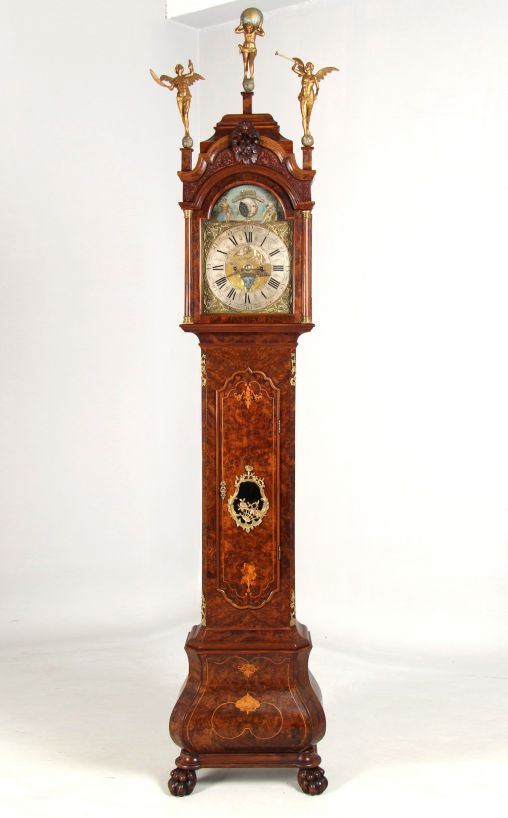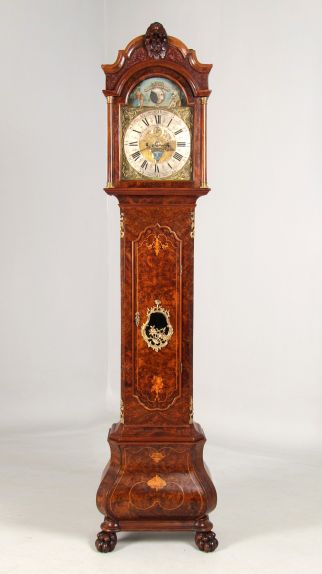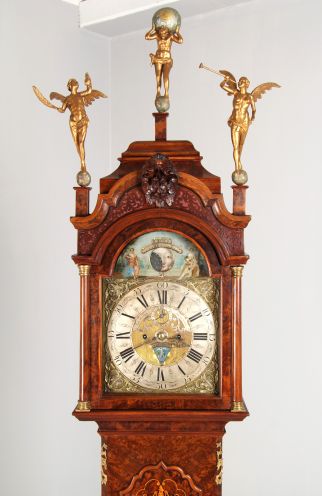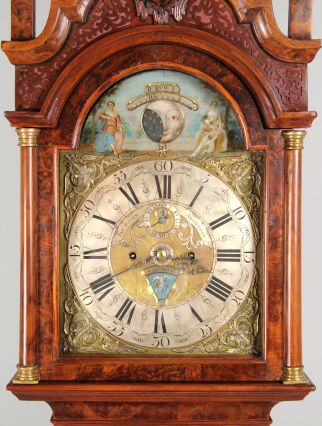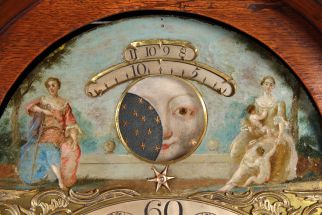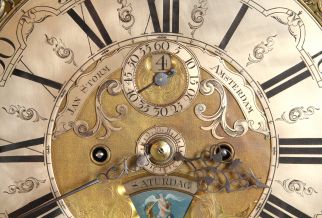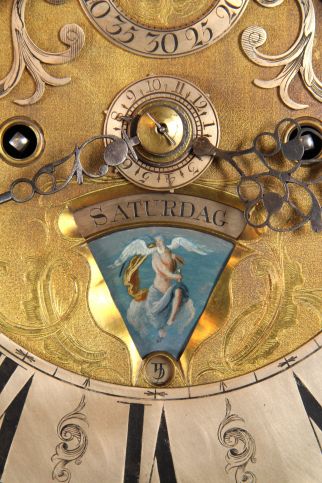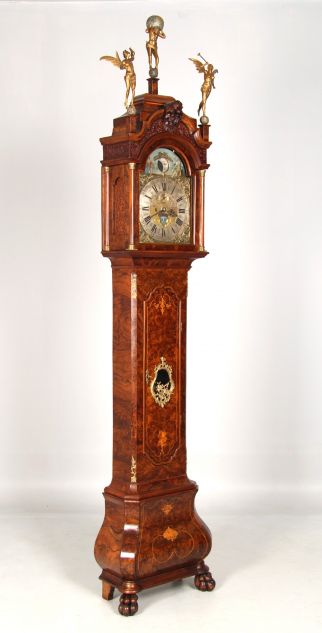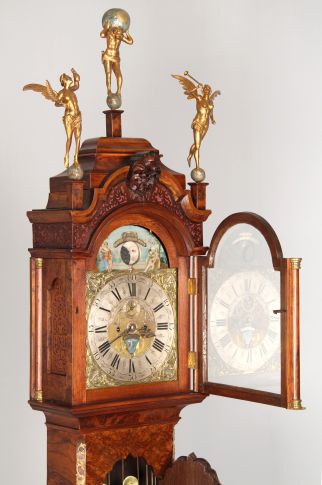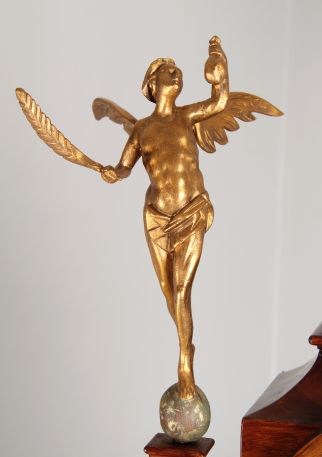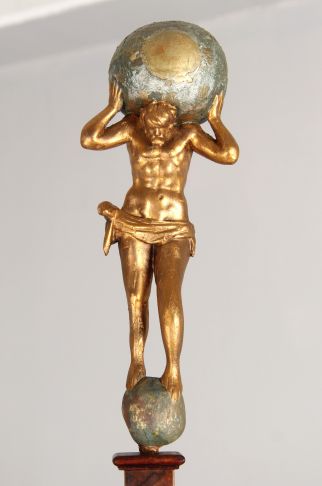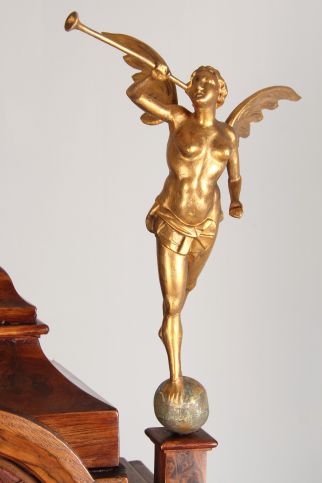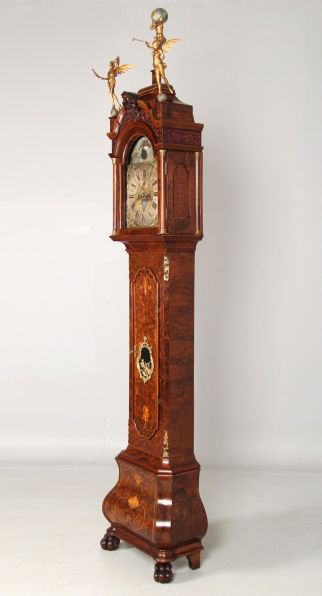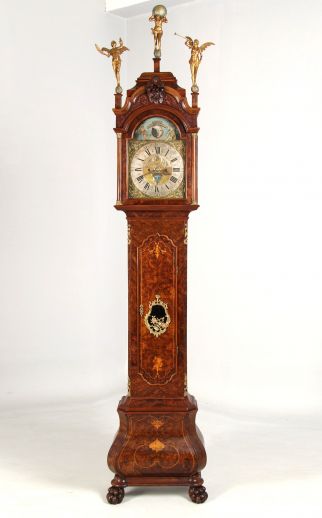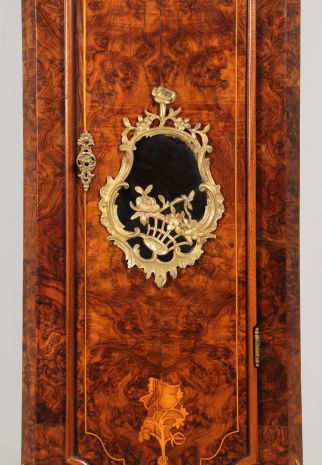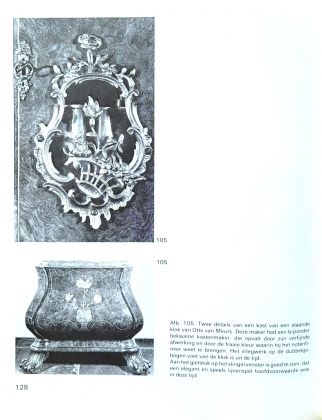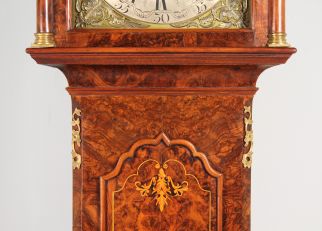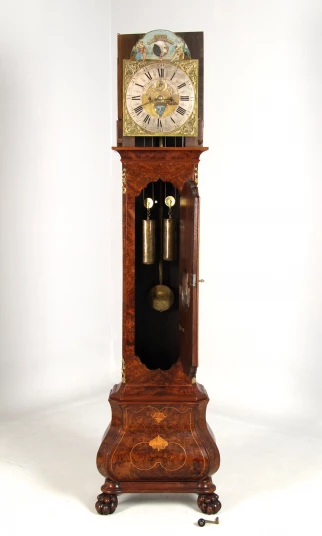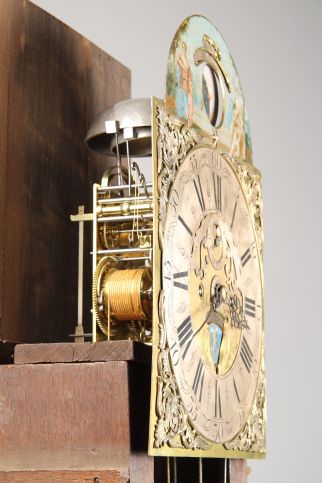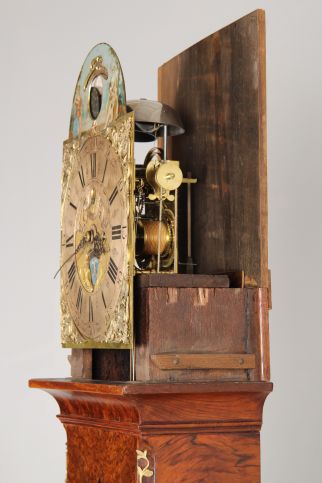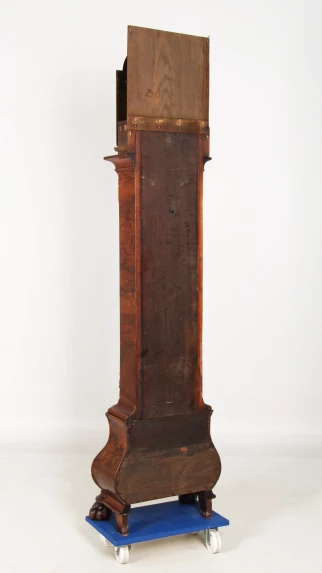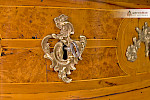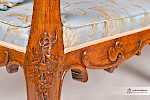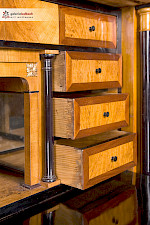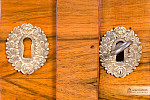Antique Amsterdam grandfather clock with alarm, calendar and moon phase
Amsterdam
Nut root and others
circa 1760
Dimensions:
H x W x D: 283 x 58 x 30 cm - without figures the height is reduced to 241 cm
Description:
Elaborate grandfather clock in typical Amsterdam design with figure crowning.
The walnut-root veneered body with fine maple inlays stands on so-called ball-and-claw feet, which were particularly popular in the mid-18th century. The lower part of the body is, also typical of the time, strongly bulging, while the centre part is recessed in width and has a curved door at the top and bottom with thread inlays following this line. The asymmetrical, ormolu framing of the viewing window with its C-curves, flowers and rocailles corresponds to the formal language of the Rococo period.
The head of the clock is spectacular. The round arch supported by four columns with openwork above is complemented by a pedestal-like structure with carved and oil-gilt figures. On the left we see Hermes, the messenger of the gods, here as the patron saint of trade with a quill and purse; and on the right Fama, the goddess of fame with the Roman tuba in her hand. And enthroned above all this is Atlas, the Titan, holding the celestial globe.
A very similar case, with a clockwork by Otto van Meurs, is described in Jan Zeeman - De Nederlandse Staande Klok on pages 126-128. (See photo) It reads as follows:
Otto van Meurs had a particularly skilful case maker, distinguished by his refined workmanship and the beautiful colour of the walnut veneer. The inlay work on the double-curved base of the clock dates from this period. The moulded part on the pendulum window clearly shows that an elegant and playful interplay of lines was a basic requirement at this time.
It is obvious that the case of the clock on offer here comes from the workshop of this very case maker.
The dial is also particularly interesting. The moon phase and the age of the moon can be seen at the top of the arch. The fact that the moon is firmly mounted and the celestial disc rotates in front of it is unusual and therefore particularly noteworthy. This is a rare design which, in contrast to the usual rotating moon, still leaves space to the left and right of the arch. This space was used for a fine painting:
Against the expanse of the sky and in the shade of the trees, we see on the left hand side Spes, the personification of hope, leaning on an anchor and ensuring a good harvest; and on the right, Caritas as the personification of charity, here mercifully caring for the family.
Below this is a silver-plated chapter ring with black Roman numerals for the hours and Arabic numerals for the minutes, which are rotated from 20-40, typical of the time and region. The finely sawn and blued steel hands run in front of a small silver ring, which is used to set the alarm time.
Below this, we see the day of the week in a triangular window with the corresponding Greek symbol and a personification of a deity, in this case Chronos, who stands for Saturday and who limits life with his scythe. The other days of the week are symbolised by Diana, the goddess of the hunt on Monday; Ares, the god of war and battle on Tuesday; Hermes, the messenger of the gods on Wednesday; Zeus, the highest of all gods on Thursday; Venus, the goddess of love and beauty on Friday; and Apollo, the god of music and beautiful things on Sunday.
Above the winding holes we see a small sub-dial for the seconds, a window for the date and the signature of the master clockmaker - Jan Storm - Amsterdam.
The Storm family is recorded with several generations of clockmakers in Amsterdam from 1672. According to Enrico Morpurgo - Nederlandse klokken- en horlogemakers vanaf 1300, Jan Storm was active from 1717. The clock offered here probably dates from the last years of his workshop.
The weight-driven movement, with a power reserve of one week, strikes the number of hours on the half-hour and hour, and a single strike for each quarter hour.
Condition:
Very good, restored condition of movement and case. The movement has been completely dismantled, cleaned and overhauled, the case has been primed with shellac and matted with wax.
The top pedestal of the head was not present at the time of purchase and was added during the restoration according to the old model. On the photo showing the back wall of the case, you can see that the back wall was first shortened and then lengthened again, presumably for transport during a move.
Price: 12000,- €
We recommend the following literature for this clock:
Jan Zeeman - De Nederlandse Staande Klok
You can find out more about the creative period of the Storm clockmaking family in the following directory:
Enrico Morpurgo - Nederlandse klokken- en horlogemakers vanaf 1300
Article found under: Clocks
Add to shopping cartVideo Amsterdam grandfather clock
Also interesting
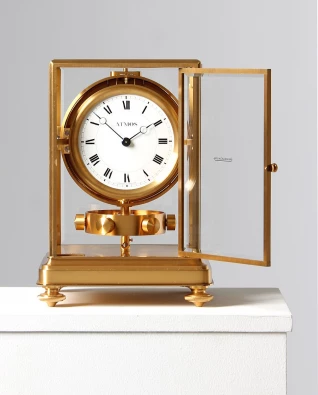
Jaeger LeCoultre - Atmos Jubilé
Switzerland
Gold-plated brass
Year of manufacture 1979
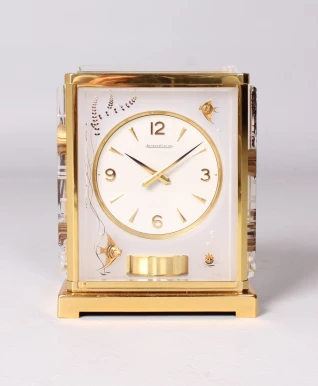
Jaeger LeCoultre - Atmos "Poissons
Switzerland
Brass, plexiglass
Year of manufacture 1962

Small Biedermeier linen cupboard
Southwest Germany
Walnut
Biedermeier around 1830
